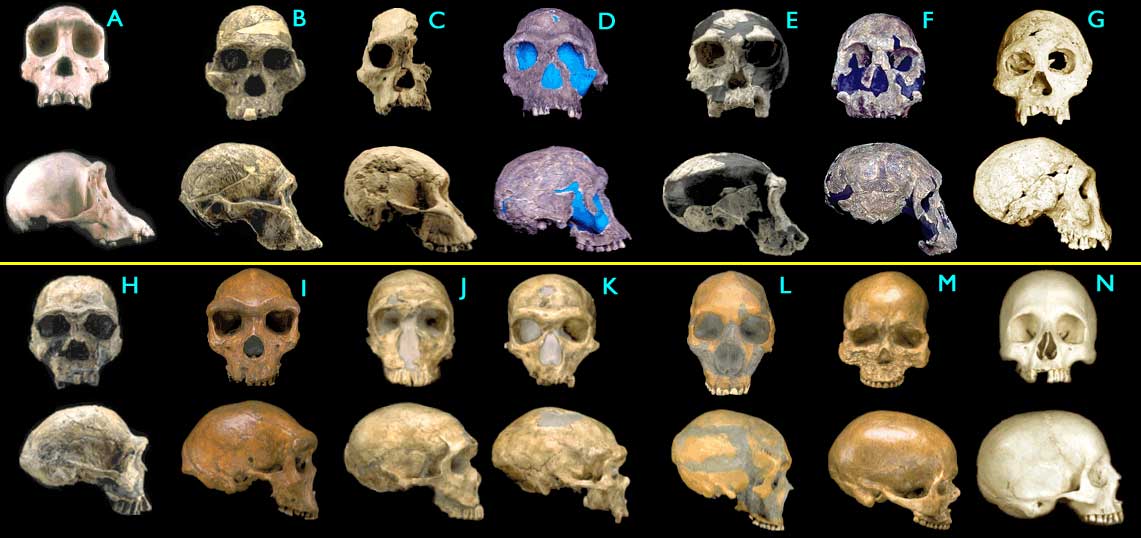The appearance of new species seems to be a step function not an analog process.... "
First of all, the fossil record is very spotty, with typically millions of years and/or hundreds of miles separating one dig from the next.
Second, the average life-span of a "species" is only about one million years before it either goes extinct, or necessarily changes into something different enough to call a new "species".
Third, once a species has become well adapted to its environment, it will not undergo major changes until its environment changes -- i.e., becomes warmer, colder, wetter, dryer, new predators, etc.
At that point change, or extinction, can be very rapid indeed.
Fourth, because of all this, we don't often find detailed records of evolutionary changes, from one species to the next, with lots of transitional intermediate fossils.
But we do have some, and here's one which might be of particular interest to you:

- (A) Pan troglodytes, chimpanzee, modern
- (B) Australopithecus africanus, STS 5, 2.6 My
- (C) Australopithecus africanus, STS 71, 2.5 My
- (D) Homo habilis, KNM-ER 1813, 1.9 My
- (E) Homo habilis, OH24, 1.8 My
- (F) Homo rudolfensis, KNM-ER 1470, 1.8 My
- (G) Homo erectus, Dmanisi cranium D2700, 1.75 My
- (H) Homo ergaster (early H. erectus), KNM-ER 3733, 1.75 My
- (I) Homo heidelbergensis, "Rhodesia man," 300,000 - 125,000 y
- (J) Homo sapiens neanderthalensis, La Ferrassie 1, 70,000 y
- (K) Homo sapiens neanderthalensis, La Chappelle-aux-Saints, 60,000 y
- (L) Homo sapiens neanderthalensis, Le Moustier, 45,000 y
- (M) Homo sapiens sapiens, Cro-Magnon I, 30,000 y
- (N) Homo sapiens sapiens, modern